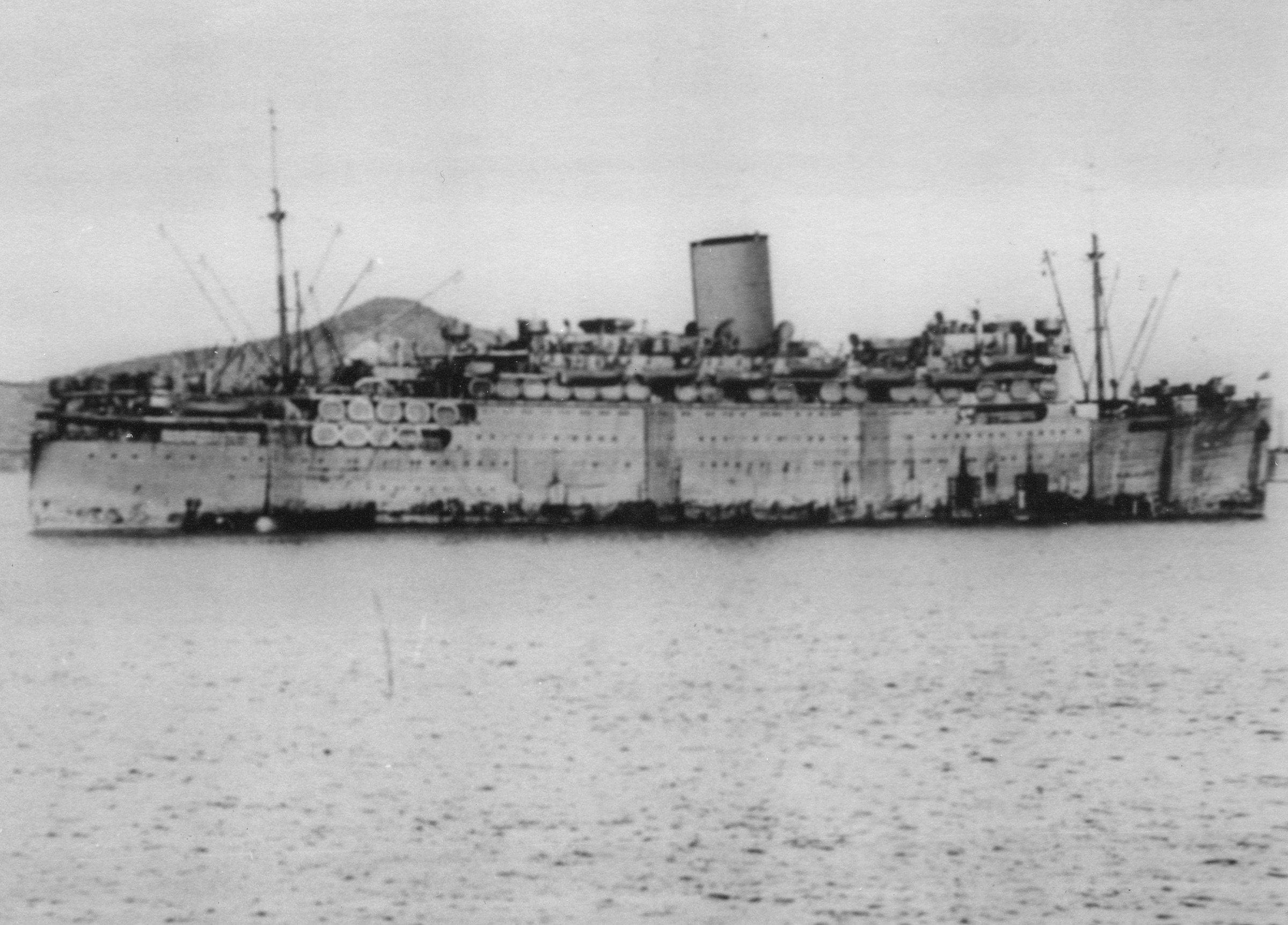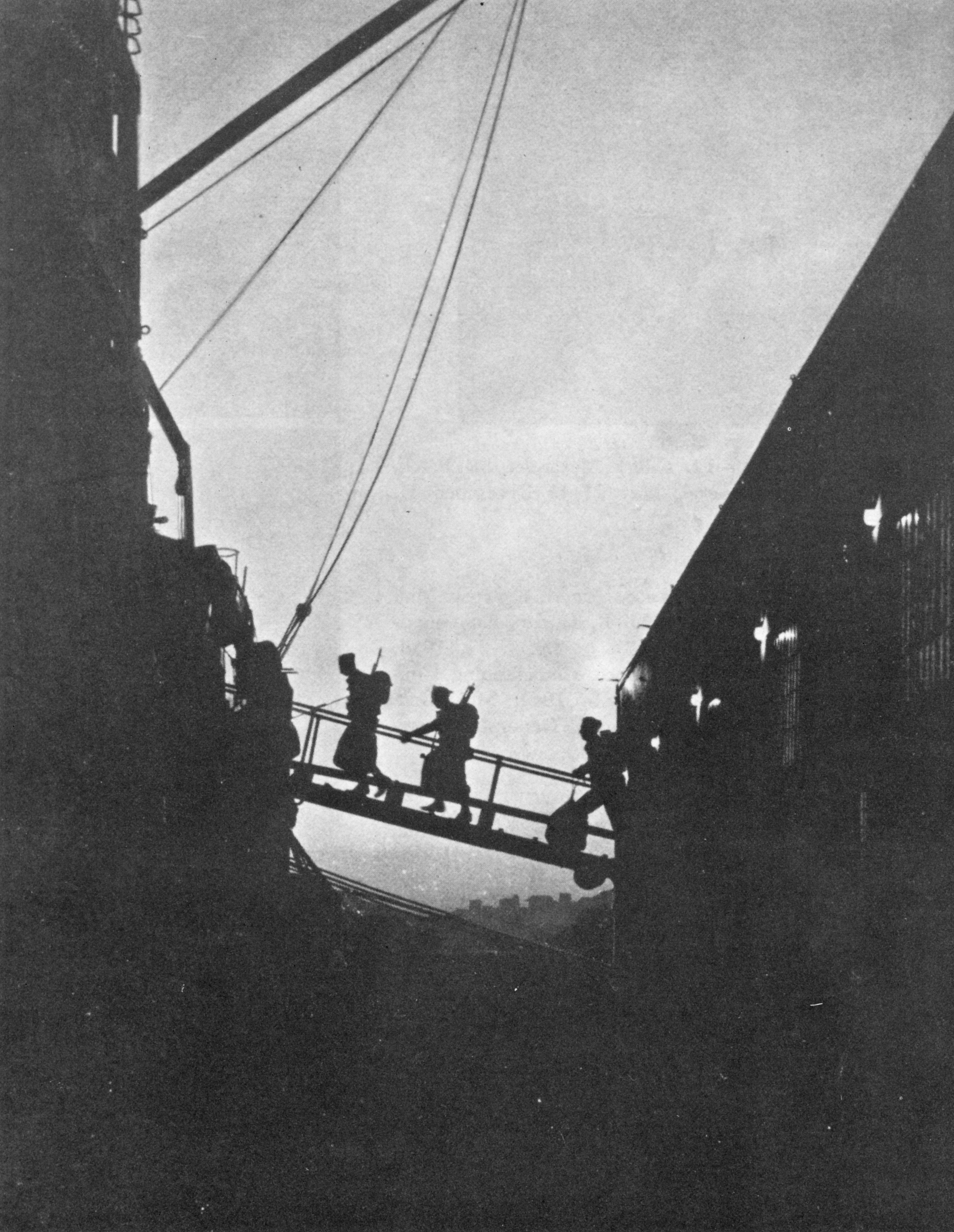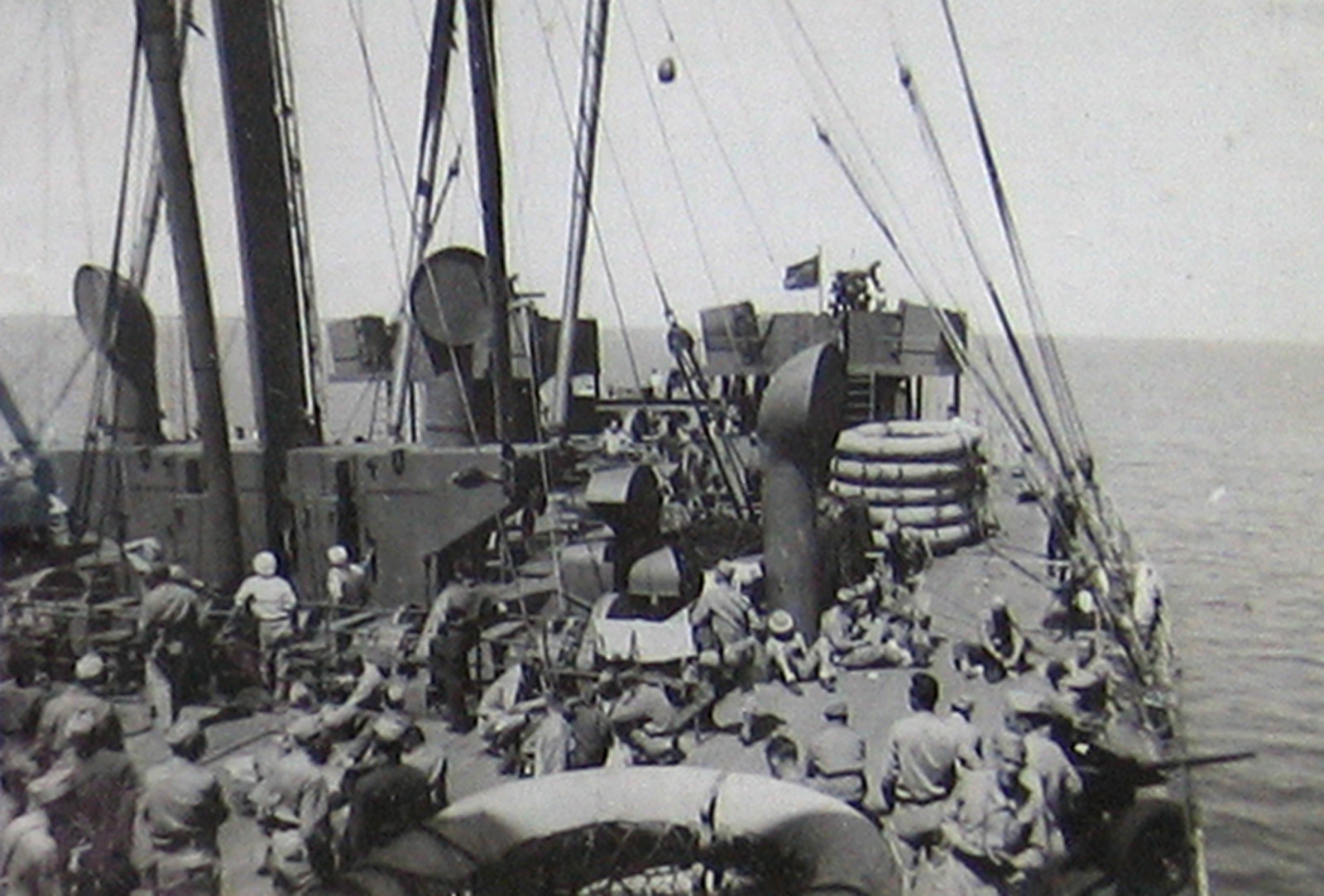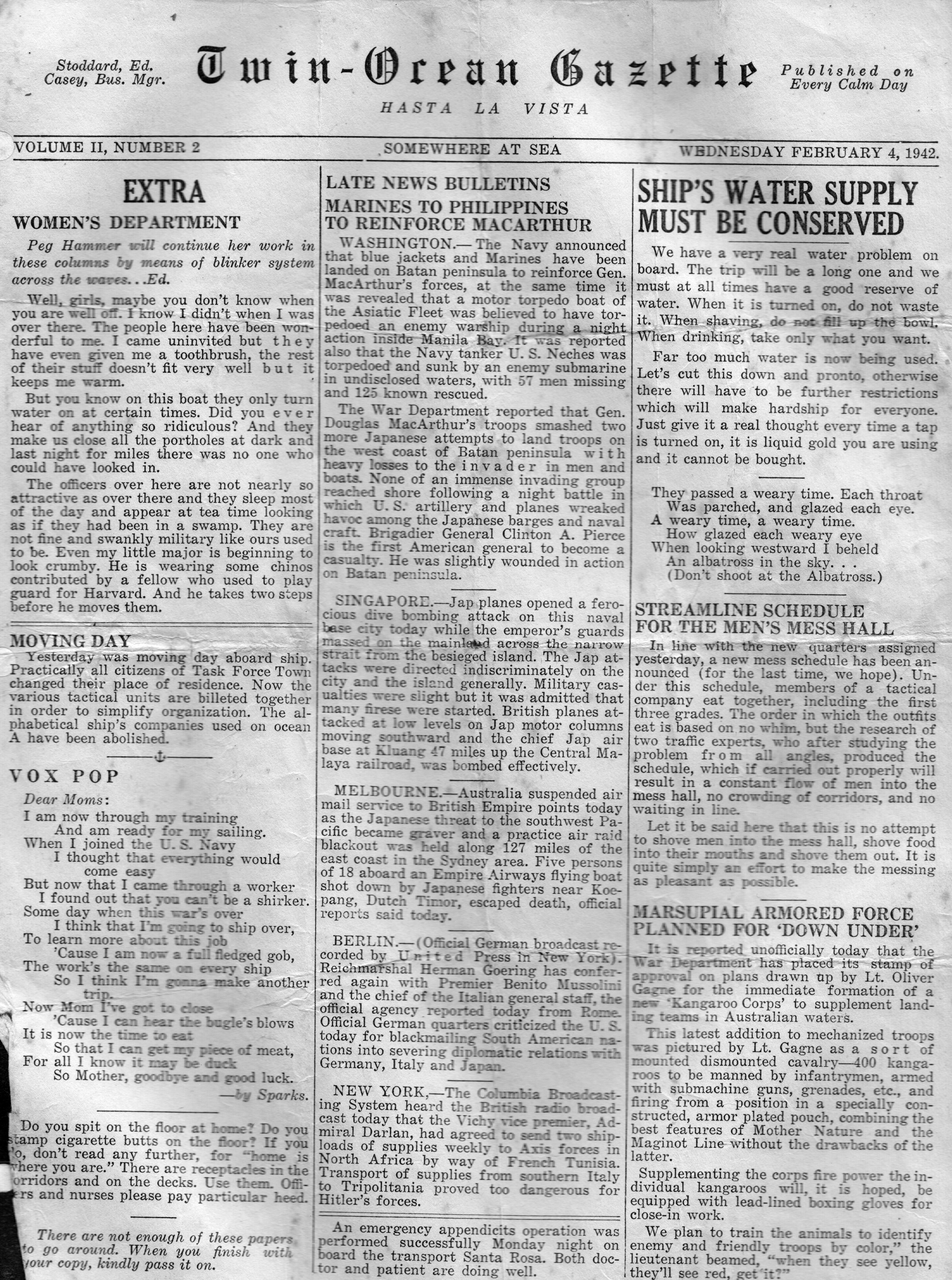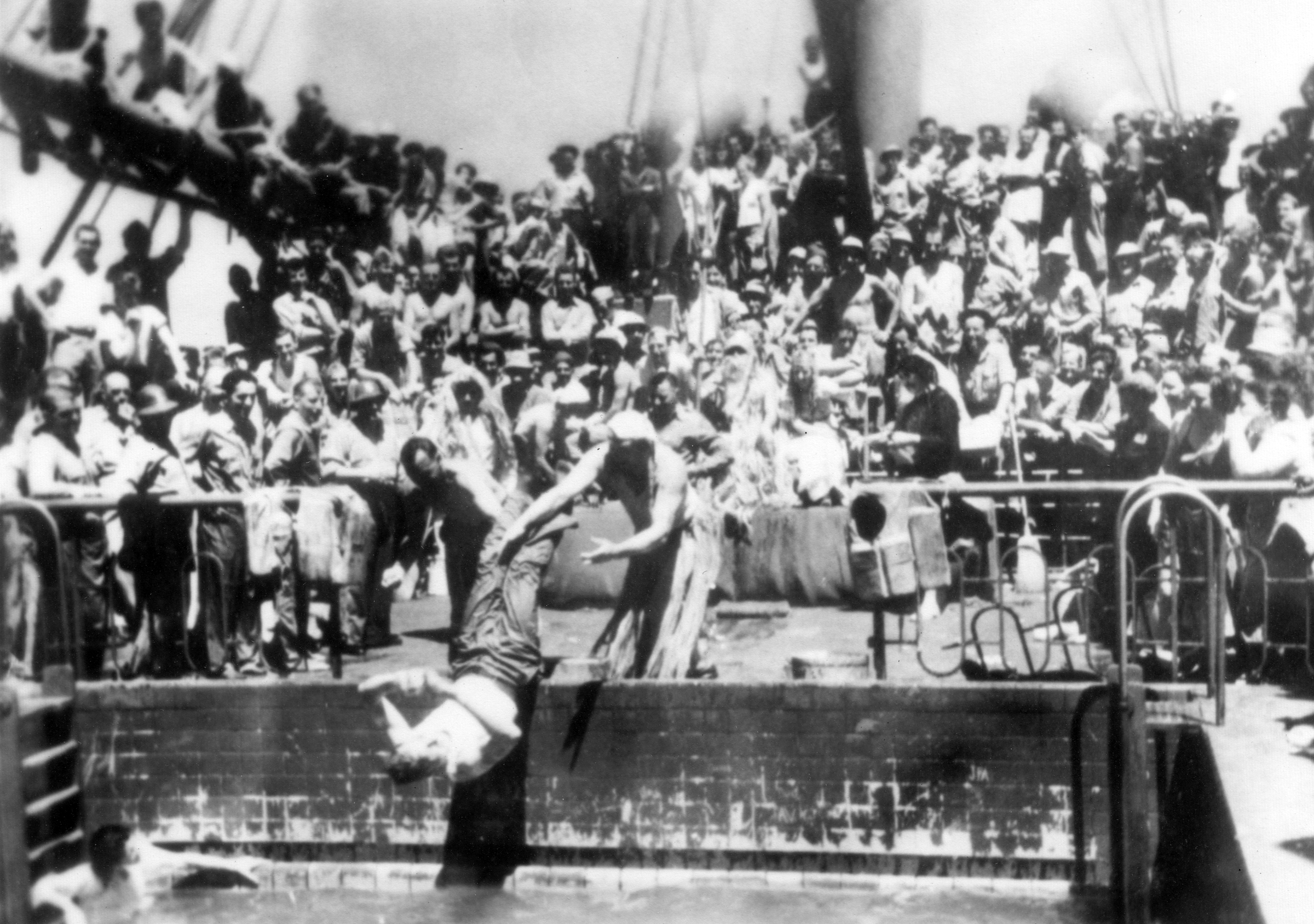By January 1942, World War II in the Pacific was going badly for the Allies. Japanese land, sea, and air forces were decimating Allied positions all over the map.Of particular interest was the French island of New Caledonia, a mineral rich island east of Australia. After briefly siding with the pro-Axis Vichy France, New Caledonia declared for the Free French under Charles De Gaulle. With the Japanese moving quickly through the Pacific, the Free French government implored Allied forces to come and secure the island.
Hurried plans were put in place to ship the available troops off to the Pacific reinforce New Caledonia. Among the available units was the 182nd Infantry Regiment, recently detached from the Yankee Division. After saying goodbyes to their families in New England, the men of Company G departed by train for New York City, where a fleet awaited them. They boarded the converted cruise liner USAT (United States Army Transport) Argentina (see Photo #1), one of seven transports making up what was designated Task Force 6814. The Task Force was comprised of not only the 182nd Infantry, but the 132nd Infantry Regiment of the Illinois National Guard, as well as supporting artillery, supply, engineer, and medical units. Their equipment was loaded haphazardly, as their departure was imminent. In Photo #2, men of the Task Force board transports in New York prior to departure. In the darkness of the morning of 23 January 1942, the convoy slipped out of New York, with most of the men aboard unaware of their final destination. They were escorted by U.S. Navy warships, along with aircraft and airships. The ships zig-zagged to avoid enemy submarines – a very serious threat along the Atlantic coast in the early months of the war.
Life aboard the transport ships of Task Force 6814 was difficult. Photo #3 of the deck of the Argentina during the voyage shows soldiers milling about on deck. The converted cruise ships had been hastily modified with racks of bunks for the soldiers. But the food and hygiene facilities of the ships were utterly inadequate. Sleeping conditions below deck were hot and crowded, and there were long lines for just about everything – especially meals and the heads.
Task Force 6814 completed passage through the Panama Canal on 31 January. They almost immediately picked up an Axis broadcast detailing the specifics of their convoy. Despite the danger, the journey was far from over. The voyage took over a month, and despite training sessions and calisthenics, life at sea was often boring. Entertainment events such as concerts and boxing were staged when possible. News aboard the Argentina was provided by the Twin-Ocean Gazette. The issue seen in Photo #4 warns passengers to conserve precious fresh water, and announces a new procedure for meals. A small blurb in the lower left corner requests that people not spit or throw cigarette butts on the deck, and remarks snidely “[o]fficers and nurses please pay particular heed.”
On 5 February, Task Force 6814 crossed the equator. Sailors took the opportunity initiated an age-old ceremony with their Army counterparts – Crossing the Line. Veteran sailors who had already crossed the equator – “Shellbacks” – convened a farcical court of King Neptune to sit in judgment. Those who had not crossed the line – “Pollywogs” – were issued a summons to the court. A series of punishment rituals soon followed. Initiates were (and are still to this day) forced to undergo various humorous but demeaning hazing rituals during the ceremony. Photo #5 shows the trial underway on board the Argentina, with King Neptune’s court at the top of the photo, and a Pollywog being tossed into a pool of something – most likely not plain water. After emerging, the victim was declared a Shellback, a veteran line crosser. Sailors who have been through this ceremony carry a “membership card,” lest they be forced to endure the rituals again on a future line-crossing.
Next Chapter: Australia: Rest Stop Down Under

